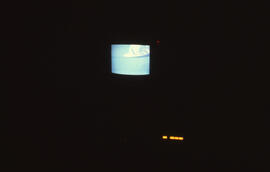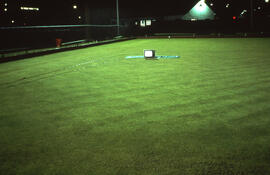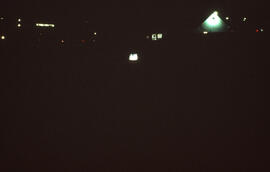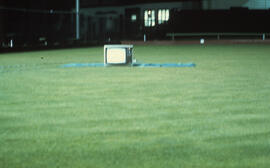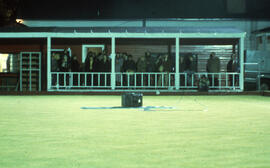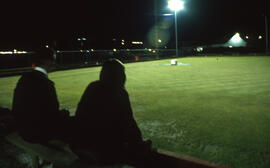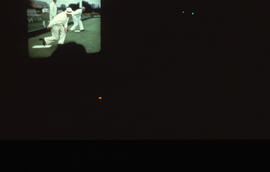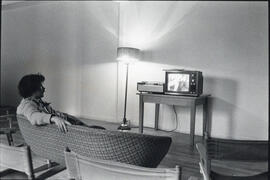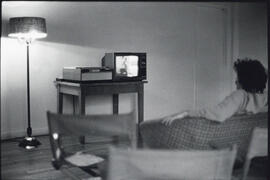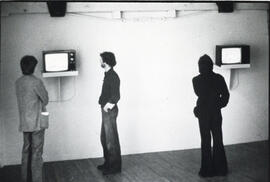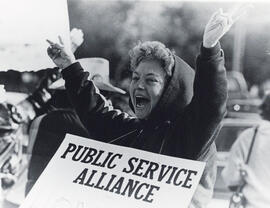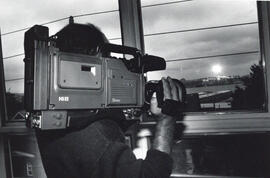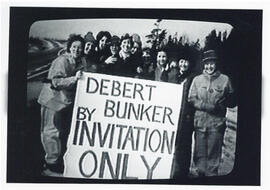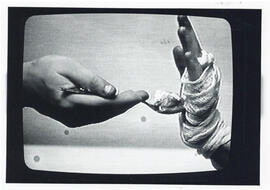Debert bunker : by invitation only : [digital video] / Liz MacDougall
- MS-3-53, Video 1
- Item
- 1985
Part of Liz MacDougall fonds
Item is a 30-minute video produced and directed by Liz MacDougall while she was a member at the Centre for Art Tapes and a student at the Nova Scotia College of Art and Design.
In this video documentary, set outside a military base in Debert, Nova Scotia on 29 February 1984, five women's Peace groups converge to call attention to an Emergency Measures Organization (EMO) test drill coordinated with multiple NATO bunkers simulating a nuclear attack on North America. For this drill, selected officials (329 men and only 11 women) were invited into Debert’s underground bunker.
At its core, NATO’s goal during a nuclear attack was to maintain continuity of Government with no provision for the protection of the population they govern. Outside the bunker, members of five non-violent feminist activist groups point out, through street theatre, rituals, waving signs and shouting, the deadly irony of this NATO strategy to rehearse for nuclear war.
Inter-cut with scenes of the day-long protest are interviews with representatives from each group comically punctuated with news footage, photographs, live radio, and film clips explaining nuclear defense strategy. Throughout this day of action women debunk the NATO strategy which would have us believe we can survive nuclear war and ultimately demand an end to the nuclear threat and to militarism.
The documentary features interviews with John Bouris, Ginny Green, Kate McKenna, Donna Smyth, Deborah Westerberg, and CBC’s Peter Gzowski interviewing Dr. Mutandis (played by Pat Kipping) live on location at Debert.
Documentary video was originally produced on U-matic 3/4 inch tape. MacDougall digitally remastered the video in 2014.



